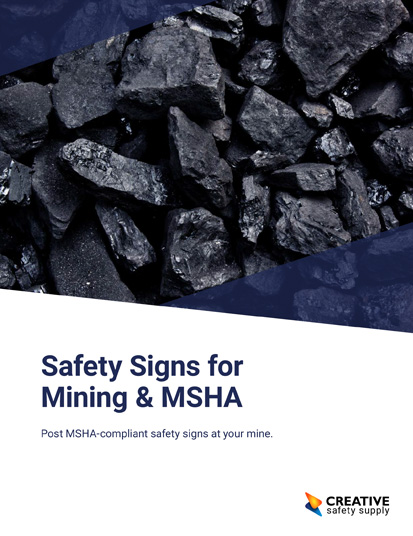Resources
Mining Safety Articles
Mine Safety & Health [Expert Advice]
Miners face many hazards that put their safety at risk. By adhering to MSHA standards and providing training and appropriate equipment, employers can enhance mining safety. …
What is a thermal printer? (direct transfer)
Thermal printers are essential to printing in an industrial setting. Learn about the two types of thermal printing to determine which one suits your facility’s needs. …
Mining Safety Questions and Answers
What are some of the Best Practices for Mining Safety?
As much as the mining industry is critical in providing resources all across the world, it comes with serious safety risks that can have a significant impact on worker safety if not addressed. By pulling together a range of incidents and successes from the global mining industry, we discuss the key learnings which can be… …
What does MSHA stand for?
MSHA stands for Mine Safety and Health Administration. It is a governmental agency of the US Department of Labor. MSHA is responsible for administering provisions of the Federal Mine Safety and Health Act of 1977. They also enforce compliance of the various laws and regulations that are written for mining companies and those that work… …
What is MSHA?
The Mine Safety and Health Administration is the current governing body overseeing the safety of mines in the country and like OSHA, is an agency of the United States Department of Labor. At the core of MSHA is the enforcement of the Federal Mine Safety and Health Act of 1977 (also known as the Mine… …
How are mine inspections handled?
The Mining Safety and Health Administration carries out annual inspections for health and safety compliance. Underground mines are inspected four times a year while surface mines have two annual inspections. Mines with higher levels of explosive or toxic gases will likely face more inspections and MSHA also conducts inspections as a response to any complaints… …
What are labels and signs I can use in a mine?
There’s no doubt that mining today is a much safer job than it was 50 years ago. The mining industry however, still has one of the highest injury and fatality rates when compared to other industries. Extra safety efforts are often made to ensure miners are kept safe while on the job. One of these… …
What are risks associated with mining?
Mines can often present much more dangerous hazards than your regular industrial facility. The following is a list of just some of the danger’s miners can face. This list is by no means complete, but rather compiled to highlight the most common hazards found in a mine. → Explosions: The threat of a potential explosion usually… …
What PPE is commonly used for mining?
Although PPE is considered the last line of defense for workers, it can be the difference between a minor injury and a life-altering injury for miners. The dangers of mining pose serious health hazards and an accident can cause loss of limbs or even death. Like any other workplace, employers and managers will need to… …
What does mining safety encompass?
There are three different kinds of mining: surface, underground, and mill/plants. Although each come with their own risks and hazards, underground is arguably the most dangerous. Mining accidents happen every day worldwide and thousands are killed every year. Miners face many hazards in their workplace like deafening sounds, explosions, rock falls, and dust exposure. Fires… …
![Mine Safety & Health [Expert Advice]](https://www.creativesafetysupply.com/content/images/articles/mining-safety-th.jpg)








